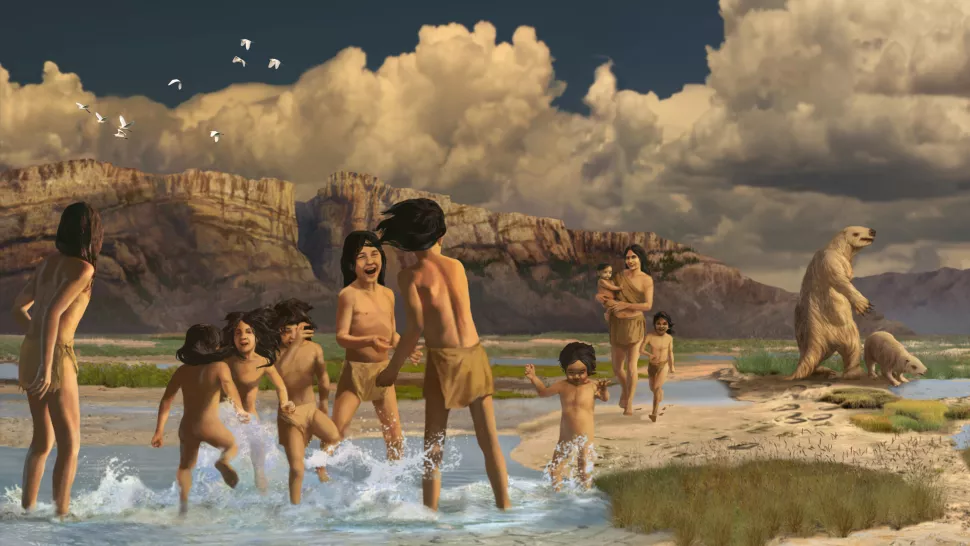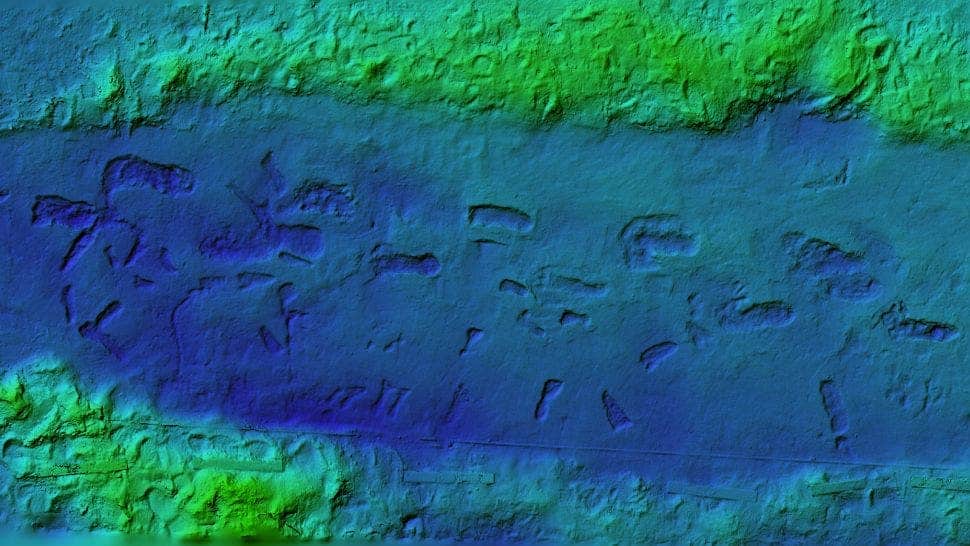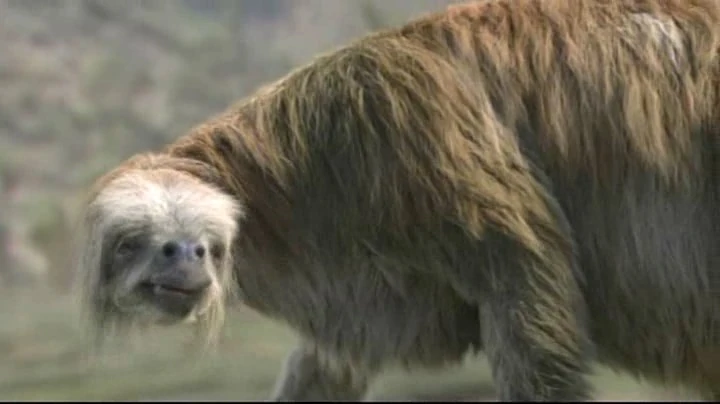Nestled in the Tularosa Basin between the Sacramento and San Andres Mountain ranges of southern New Mexico, White Sands National Park is a unique outdoor experience. But today’s park with pearl white sandy dunes looked quite different thousands of years ago.
Back then, a large lake marked the landscape, attracting all manner of thirsty creatures — from bear-sized giant to sloths to humans. The kind of humans who knew how to have fun.

As a giant sloth strode over the damp sandy ground on the edge of the lake, it left behind big footprints that quickly filled with water. Nearby hunter-gatherer children trekking with their families rushed to the area and did what kids do best — frolicked in the muddy puddles, leaving their own footprints. Both sets of footprints became fossilized through a series of fortuitous circumstances and were recently discovered by researchers led by Matthew Bennett, a professor of environmental and geographical sciences at Bournemouth University in the UK.
“All kids like to play with muddy puddles, which is essentially what it is,” Bennett told Live Science, who described these extraordinary trackways in a new study that is yet to be peer-reviewed.

This isn’t Bennett’s first rodeo at White Sands. Previously, he was part of a team of researchers who in 2021 found dozens of human footprints embedded in an ancient lake bed in the national park. What’s significant about these prints was that they were made during the height of the Last Glacial Maximum, also known as the last ice age, sometime between 19,000 and 26,000 years ago — that’s at least 5,000 years earlier than scientists generally agree that human first set foot in Americas.
The newly found trackways left by the giant sloth and hunter-gatherer children, unfortunately, have a less detailed and distinct stratigraphy than the ones from the 2021 landmark study, which means they cannot be accurately radiocarbon dated. But seeing how sloths in North America went extinct 11,000 years ago and the oldest human footprints on the continent could be up to 26,000 years old, the age of the children’s prints could be anywhere in between this range.

The giant ground sloth that provided the initial entertainment was most likely a Nothrotheriops, bear-sized megafauna, the largest of which could easily weigh over two tonnes and be 6 meters (20 ft) long. The trackway it left was made on all fours, and each print measuring around 16 inches (40 centimeters) is actually a double print.
The combination of front and back paw gives the prints a kidney shape. The human children later came and trampled over the sloth’s prints, leaving their own distinct prints, before sediments gently filled in both sets and the ground hardened. Did the children and giant sloths get along? That’s simply fascinating to imagine, but something we might never know.
Subsequent erosion resurfaced these ancient prints, much to our delight who can now actually envision a vivid Pleistocene scenery in which humans — basically the same people as you or I — and their families survived in the wilderness among grand creatures that are now long extinct.









